Malay Kumar Bandyopadhyay
Understanding Crowd Flow Movements Using Active-Langevin Model
Mar 13, 2020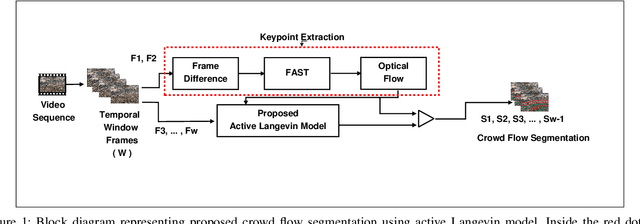
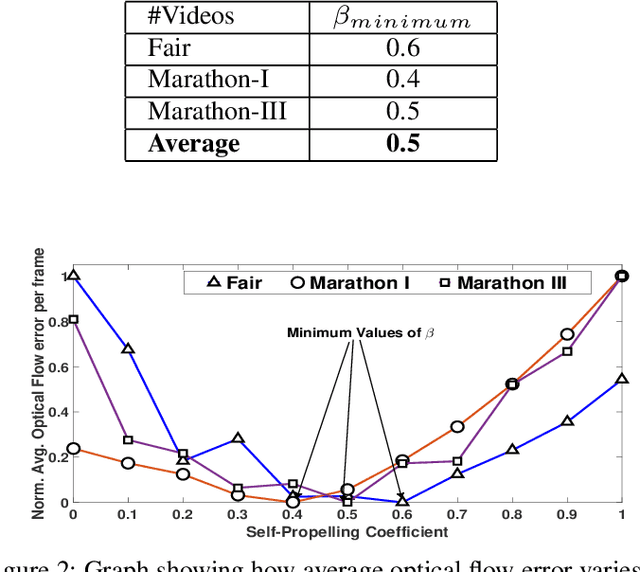
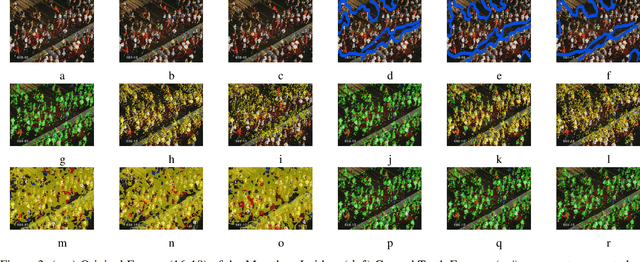

Abstract:Crowd flow describes the elementary group behavior of crowds. Understanding the dynamics behind these movements can help to identify various abnormalities in crowds. However, developing a crowd model describing these flows is a challenging task. In this paper, a physics-based model is proposed to describe the movements in dense crowds. The crowd model is based on active Langevin equation where the motion points are assumed to be similar to active colloidal particles in fluids. The model is further augmented with computer-vision techniques to segment both linear and non-linear motion flows in a dense crowd. The evaluation of the active Langevin equation-based crowd segmentation has been done on publicly available crowd videos and on our own videos. The proposed method is able to segment the flow with lesser optical flow error and better accuracy in comparison to existing state-of-the-art methods.
Estimation of Linear Motion in Dense Crowd Videos using Langevin Model
Apr 15, 2019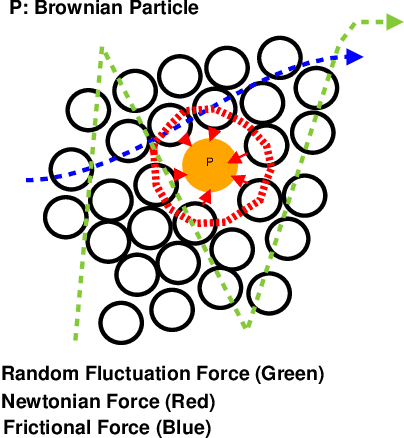
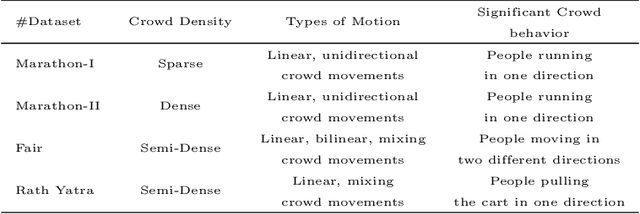
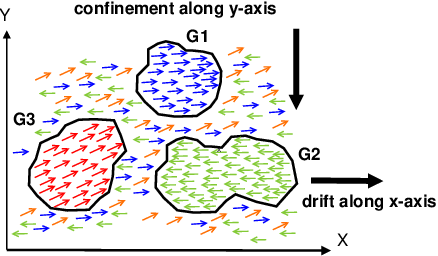

Abstract:Crowd gatherings at social and cultural events are increasing in leaps and bounds with the increase in population. Surveillance through computer vision and expert decision making systems can help to understand the crowd phenomena at large gatherings. Understanding crowd phenomena can be helpful in early identification of unwanted incidents and their prevention. Motion flow is one of the important crowd phenomena that can be instrumental in describing the crowd behavior. Flows can be useful in understanding instabilities in the crowd. However, extracting motion flows is a challenging task due to randomness in crowd movement and limitations of the sensing device. Moreover, low-level features such as optical flow can be misleading if the randomness is high. In this paper, we propose a new model based on Langevin equation to analyze the linear dominant flows in videos of densely crowded scenarios. We assume a force model with three components, namely external force, confinement/drift force, and disturbance force. These forces are found to be sufficient to describe the linear or near-linear motion in dense crowd videos. The method is significantly faster as compared to existing popular crowd segmentation methods. The evaluation of the proposed model has been carried out on publicly available datasets as well as using our dataset. It has been observed that the proposed method is able to estimate and segment the linear flows in the dense crowd with better accuracy as compared to state-of-the-art techniques with substantial decrease in the computational overhead.
 Add to Chrome
Add to Chrome Add to Firefox
Add to Firefox Add to Edge
Add to Edge